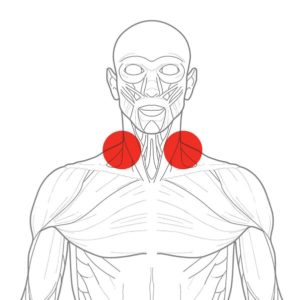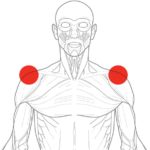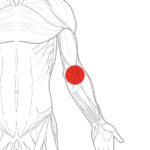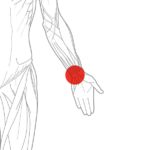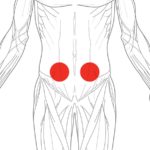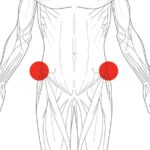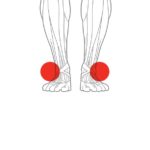BJJ Back Pain: How to Treat, Recover, and Prevent

BJJ Prehab
Brazilian Jiu-Jitsu is an incredibly rewarding martial art that challenges both the body and the mind. However, as with any physically demanding sport, practitioners may experience injuries and discomfort, including back pain.

In this blog post, we will explore the causes of BJJ back pain, how to treat and recover from it, and how to prevent it in the future.
Causes of BJJ Back Pain
BJJ back pain can result from various factors, such as:
Poor technique: Using incorrect techniques or body positioning during training can place excessive strain on the back muscles and spine, leading to pain and discomfort.
Overtraining: Intense and frequent training sessions without sufficient rest and recovery can cause back pain due to muscle fatigue and overuse.
Weak core muscles: A strong core is essential for maintaining proper posture and stability during BJJ. Weak core muscles can lead to an overreliance on back muscles, causing pain and discomfort.
Pre-existing conditions: Individuals with pre-existing back conditions, such as herniated discs or degenerative disc disease, may be more susceptible to back pain during BJJ training.
Treating BJJ Back Pain
If you’re experiencing back pain from BJJ, it’s essential to address the issue promptly to prevent further damage and ensure a speedy recovery. Here are some steps you can take to treat your back pain:
Rest: Give your body time to heal by taking a break from training. Depending on the severity of your pain, you may need to rest for a few days or even weeks.
Ice and heat therapy: Applying ice packs to the affected area can help reduce inflammation and numb the pain, while heat therapy can relax tight muscles and improve circulation. Alternate between ice and heat therapy for optimal results.
Over-the-counter pain relievers: Nonsteroidal anti-inflammatory drugs (NSAIDs), such as ibuprofen, can help alleviate pain and reduce inflammation. Always consult your doctor before taking any medication.
Gentle stretching and mobility exercises: Incorporate gentle stretching and mobility exercises (like the ones provided in the BJJ Prehab program) into your daily routine to improve flexibility and prevent stiffness in the affected area.
Massage and foam rolling: Massage and foam rolling can help release tight muscles and trigger points, providing relief from back pain.
Recovering from BJJ Back Pain
Once you’ve begun treating your back pain, focus on recovery to ensure you can return to BJJ training safely and effectively. Here are some tips for a successful recovery:
Gradually ease back into training: Don’t rush back into intense training sessions. Instead, gradually increase the intensity and duration of your workouts to give your body time to adjust.
Work on improving your technique: Poor technique is a common cause of back pain in BJJ practitioners. Take the time to work on your technique with the guidance of a qualified instructor to minimize the risk of future injuries.
Strengthen your core: Incorporate core-strengthening exercises into your workout routine to support your spine and reduce the risk of back pain (keep reading for our recommendations).
To prevent back pain in the future, consider implementing the following strategies:
Warm-up and cool down: Always warm up before training and cool down afterward to prepare your muscles and joints for the demands of BJJ.
Focus on proper technique: Ensure you’re using correct techniques and body positioning during training to minimize strain on your back muscles and spine.
Listen to your body: If you feel discomfort or pain during training, stop and assess the situation. Pushing through pain can lead to further injury and prolonged recovery times.
Incorporate rest days: Schedule regular rest days into your training routine to give your body time to recover and prevent overuse injuries.
Make BJJ Prehab part of your training routine: Here are 3 exercises from the BJJ Prehab program that will help you keep your back healthy and prevent further injury…
Plank
The plank is an excellent exercise for strengthening your core muscles, which play a crucial role in supporting your spine and preventing back pain. To perform a plank, get into a push-up position, but rest on your forearms instead of your hands. Keep your body in a straight line from head to toe, engaging your core muscles to maintain this position. Hold the plank for 30 seconds to one minute, gradually increasing the duration as you build strength.
Bird Dog
This exercise helps improve core stability and works on both the lower back and abdominal muscles. Start on your hands and knees with your hands directly under your shoulders and your knees under your hips. Slowly extend your right arm and left leg simultaneously while keeping your back straight and core engaged. Hold this position for a few seconds before returning to the starting position. Repeat the process with your left arm and right leg. Perform 10-15 repetitions for each side.
Hip Bridges
- Hip bridges target the glutes, lower back, and hamstrings, all of which contribute to spinal support and stability. To perform a hip bridge, lie on your back with your knees bent and feet flat on the ground, hip-width apart. Place your arms by your sides, palms facing down. Engage your core and glutes, then lift your hips off the ground until your body forms a straight line from your shoulders to your knees. Hold this position for a few seconds before slowly lowering your hips back down to the ground. Complete 10-15 repetitions.
Conclusion
BJJ back pain is a common issue that can be addressed through proper treatment, recovery, and prevention strategies. By understanding the causes of back pain, implementing appropriate treatment methods, and focusing on injury prevention, you can continue to enjoy the many benefits of Brazilian Jiu-Jitsu without compromising your spinal health.


